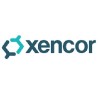
Value of Using Pioglitazone in Chronic Myeloid Leukemia Treatment
Chronic Myelogenous LeukemiaBCR-ABL Positive2 moreAssessment of patients response and expression levels of CITED2 and HIF2a genes on adding pioglitazone to imatinib therapy.

Allogeneic Stem Cell Transplantation for Children With CML
Chronic Myeloid LeukemiaIn children and adolescents with chronic myeloid leukaemia (CML) stem cell transplantation (SCT) may be a valid alternative to the life-long treatment with tyrosinkinase inhibitors (TKI). This trial aims to evaluate the use of a reduced intensity conditioning regimen (RIC), consisting of fludarabine, melphalan and thiotepa in order to minimize transplant related mortality and toxic late effects. Strict post-transplant monitoring and reintroduction of TKI as well as donor lymphocyte infusions (DLI) in case of relevant residual disease are part of the protocol.

PH 1 Study to Evaluate Safety and Tolerability of XmAb14045 in Patients With CD123-expressing Hematologic...
Acute Myelogenous LeukemiaB-cell Acute Lymphoblastic Leukemia3 moreThe purpose of this study is to determine the safety and tolerability of weekly intravenous (IV) administration of XmAb14045 and to determine the maximally tolerated dose (MTD) after the first dose, and then to determine the MTD after second and subsequent infusions.

Sirolimus and Mycophenolate Mofetil in Preventing GVHD in Patients With Hematologic Malignancies...
Adult Hodgkin LymphomaAdult Myelodysplastic Syndrome21 moreThis pilot phase I/II trial studies the side effects and how well sirolimus and mycophenolate mofetil work in preventing graft versus host disease (GvHD) in patients with hematologic malignancies undergoing hematopoietic stem cell transplant (HSCT). Biological therapies, such as sirolimus and mycophenolate mofetil, use substances made from living organisms that may stimulate or suppress the immune system in different ways and stop tumor cells from growing. Giving sirolimus and mycophenolate mofetil after hematopoietic stem cell transplant may be better in preventing graft-versus-host disease.

Allo-HSCT With Alternative Donor in Treatment of Hematologic Malignancy
Acute LeukemiaChronic Myeloid Leukemia1 moreThe purpose of this study is to compare the efficacy of allogeneic hematopoietic stem cell transplantation (allo-HSCT) from matched sibling donor (MSD),matched unrelated donor (MUD) and haploidentical related donors(HRD) in the treatment of hematologic malignancy.

Treatment of CML Patients With Imatinib and Hydroxyurea (CML2004)
LeukemiaMyelogenous2 moreThe study will test the tolerability and efficacy of the combination therapy Imatinib/Hydroxyurea (HU) in patients with chronic myeloid leukemia (CML) in first chronic phase (CP1) newly diagnosted or failing interferon-based therapy.

Adoptive Immunotherapy in Relapsed Hematological Malignancy: Early GVHD Prophylaxis
Hodgkin's LymphomaLymphoid Leukemia17 moreDetermine the relapse-free, donor lymphocyte infusion (DLI)-free survival in patients receiving the investigational regimen.This is a randomized phase II clinical trial, comparing two different dosing schedules of mycophenolate mofetil for graft versus host disease (GVHD) prevention following allogeneic stem cell transplantation. Risk for relapse, GVHD and non-relapse mortality will be assessed. Adaptive randomization between two study arms will be performed based on T cell counts at day 60.

Ibrutinib in Preventing Acute Leukemia in Patients After Reduced-Intensity Conditioning and Stem...
Acute Biphenotypic LeukemiaAcute Lymphoblastic Leukemia4 moreThis phase II trial studies how well ibrutinib works in preventing acute leukemia in patients after reduced-intensity conditioning and stem cell transplant. Ibrutinib may stop the growth of tumor cells by blocking some of the enzymes needed for cell growth.

Study of Bosutinib in Japanese Adult Patients With Newly Diagnosed Chronic Phase Chronic Myelogenous...
LeukemiaChronic MyelogenousPhase 2, single-arm, open-label trial. Patients will receive bosutinib for the duration of the study.

Safety and Efficacy of Pegylated IFN-alpha 2B Added to Dasatinib in Newly Diagnosed Chronic Phase...
LeukemiaMyeloid1 morePatients with newly diagnosed CML have excellent outcomes with tyrosine kinase inhibitors (TKI). However, a few patients will be cured with TKIs alone, and thus need continued life-long treatment. Some patients achieve complete molecular remission (CMR), and this rate is higher with second generation TKIs compared with imatinib. Some experience with drug discontinuation in CMR has been derived from a few small studies, most notably the French STIM study. Approximately 40 % of patients with a minimum of two years in MR4.5 (4.5 log reduction in molecular response) can stop imatinib without relapse, indicating possible cure. To increase the non-relapse rate is of major importance. To achieve a permanent "cure" without stem cell transplantation is presently the most relevant goal of clinical studies in CML. The investigators hypothesize that to significantly increase cure rates in CML, therapy should eradicate leukemic stem cells and/or induce or restore anti-CML immunity. Second generation TKIs may have a more profound effect on the stem cell pool as compared to imatinib. This is assessed in our current randomized study with a reduction in leukemic stem cell burden as the primary endpoint (NordCML006). Interferon-alpha (IFN) has a prominent immunomodulatory and antiproliferative mode of action, and has also activity in stem cells. Pegylated IFN in combination with imatinib results in improved therapy responses as compared to imatinib monotherapy. This advantage may translate into higher cure rates. Dasatinib has a unique dual mechanism of action: it is the most potent of available TKIs and induces immunological effects that are different from those of IFN. Both of these drugs may have immunological adverse-effects when used as a monotherapy. However, immunological adverse-effects may also be markers of anti-leukemia efficacy. A combination of dasatinib and pegylated IFN (PegIFN) may have additive or synergistic effects and should be tested in a clinical study.
